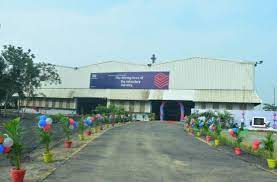The dependability and effectiveness of refractory materials are fundamental to high-temperature industrial processes. In addition to the essential qualities already mentioned, other subtle but equally important aspects affect the functionality and durability of refractory linings. Examining these extra characteristics in more detail provides an additional understanding of the complexities of choosing the best refractory material for a given application.
We have listed out a few properties of refractory materials that the leading refractory manufacturers produce. They are:
-
Heat Resistance
The fundamental property of refractory materials is their resistance to melting, softening, and structural degradation at high temperatures. The material’s melting point, which should be higher than the application’s working temperature, is frequently used to gauge heat resistance. Common refractory materials suitable for various industrial uses include silica, magnesia, and alumina.
-
Heat Conductivity
In simple terms, heat or thermal conductivity means a material’s capacity to conduct heat. In refractory functions, low thermal conductivity is recommended to minimize heat transfer and maintain process temperature stability. Because they prevent heat loss through the lining of reactors, kilns, and furnaces, refractory materials with low thermal resistance contribute to energy conservation and increased efficiency. The leading refractory manufacturers in India conduct all necessary tests to check the material’s quality.
-
Chemical Stability
Many people in industries know that when refractory materials come into contact with harsh substances like molten metal, acids, and bases, they must keep their physical integrity. Chemical stability shields refractory linings from erosion and deterioration, increasing their service life. Thus, guaranteeing dependable operation in harsh conditions. Materials with remarkable chemical stability, such as zirconia and chromium-based refractories, are appropriate for corrosive engineering applications.
-
Mechanical Strength
Mechanical strength is essential for refractory materials to endure mechanical loads, heat shock, and load-bearing demands during installation and operation. Refractory linings with high mechanical strength are less likely to fracture, or fail because they can keep their structural strength and shape under various difficult situations. Because of their superior mechanical strength, materials made by the leading refractory manufacturers are appropriate for high-strength steelmaking and incineration applications.
-
Resistance to Creep
A material will gradually deform under a continuous load or stress, usually at a high temperature, a phenomenon known as creep. Creep resistance is crucial in refractory applications to preserve dimensional stability and stop refractory linings from deforming or sagging over time. High-purity alumina and silicon nitride ceramics are materials with strong creep resistance favored for applications that call for extended exposure to extreme temperatures and mechanical loads. Increased creep resistance minimizes the need for maintenance and downtime in industrial operations by ensuring the integrity and functionality of refractory structures.
-
Scratch Resistance
Refractory linings encounter abrasive substances and mechanical wear in industries such as waste incineration, mining, and power generation. Refractory materials must resist scratches to avoid erosion and degradation over time. Materials with high abrasion resistance are chosen for applications prone to harsh conditions because they prolong the life of refractory linings and lower maintenance costs. As mentioned above, the leading refractory manufacturers in India conduct all the necessary tests before they are released for public use.
-
Porosity and Adhesion
Their porosity and permeability influence refractory materials’ gas permeation and thermal insulation qualities. Controlled porosity enhances the stability and functionality of refractory linings by facilitating the diffusion of gases and the release of thermal stresses. Industrial procedures are more reliable and efficient when materials with the best porosity and absorbency find a balance between mechanical strength and thermal insulation.
Conclusion
To ascertain if refractory materials are suitable for a range of high-temperature applications in diverse industries, a thorough evaluation of their properties is necessary. Manufacturers at RHI Company carefully consider a number of aspects while selecting refractory materials for certain activities in order to provide the finest possible product to its customers. This astute methodology guarantees that RHI provides solutions that are customized to meet the rigorous requirements of industrial settings, enhancing effectiveness, durability, and performance in many industries.


